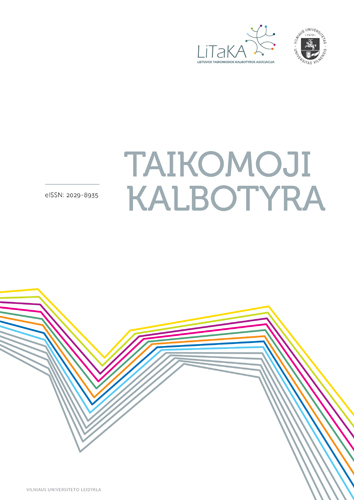Lietuvos miestų gyventojų tarminės regioninės savimonės ypatumai (sociolingvistinio tyrimo duomenimis)
Specific features of dialectal regional self-consciousness in cities and towns of Lithuania (based on sociolinguistic data)
Author(s): Viktorija Baranauskienė, Dovile KrupickaiteSubject(s): Sociolinguistics
Published by: Vilniaus Universiteto Leidykla
Keywords: geosociolinguistics; dialectal regions of Lithuanian; ethnographic regions; attitudes towards dialects; regional self-consciousness;
Summary/Abstract: In the world which globalizes and levels out the differences of language dialects, their usage becomes an expression of a natural ethnic identity. The studies of their actual changes can reveal the ongoing processes in society. Unfortunately, studies of this kind are very few. To the authors’ knowledge, there has been no research focusing on regional patterns of dialect usage. Based on the data provided by the research project Sociolinguistic Map of Lithuania: Towns and Villages, the authors analyse the use of dialects in 67 towns of Lithuania with the population exceeding 3,000 people. The aim of the article is to determine regional peculiarities of sociolinguistic use and attitudes towards dialects, i.e. the distribution patterns of regional identity. The first section of the article is devoted to the opinions about the links of the distribution of the most beautiful, most common, most prestigious and hardly understandable dialects to the ethnographic regional structure of Lithuania. It has been determined that in smaller Lithuanian towns, especially the ones situated in the regional kernels, the usage of the dialects is still vital and regional identity is still very strong, whereas the residents of big towns, except Klaipėda, value the dialect of the region of their origin more than the dialect of their current region. The Žemaitija and Aukštaitija regions are dialectically strongest in Lithuania. Their dialects tend to spread. Meanwhile, the positions of the dialect in the small region of Dzūkija and regional identity of its population are weaker. The second section analyses opinions about the value of dialects and the necessity to preserve them. The residents of regions and towns with homogeneous ethnic structure are more determined to encourage the younger generation to use their native dialect. The same attitude is also characteristic of the population residing in kernels of regions.
Journal: Taikomoji kalbotyra
- Issue Year: 2012
- Issue No: 1
- Page Range: 1-22
- Page Count: 22
- Language: Lithuanian

